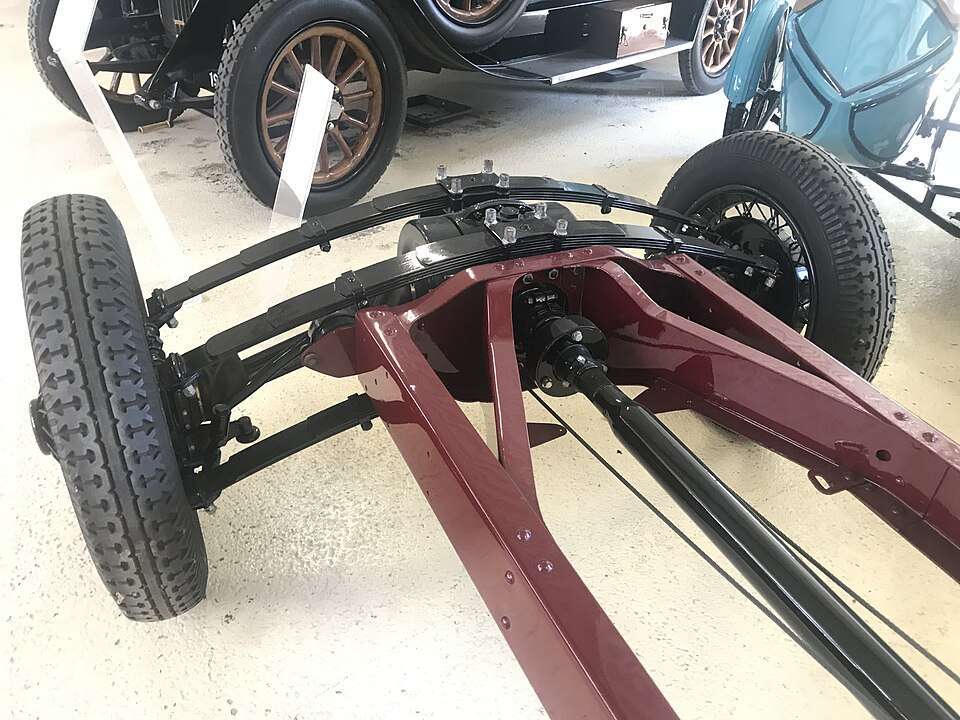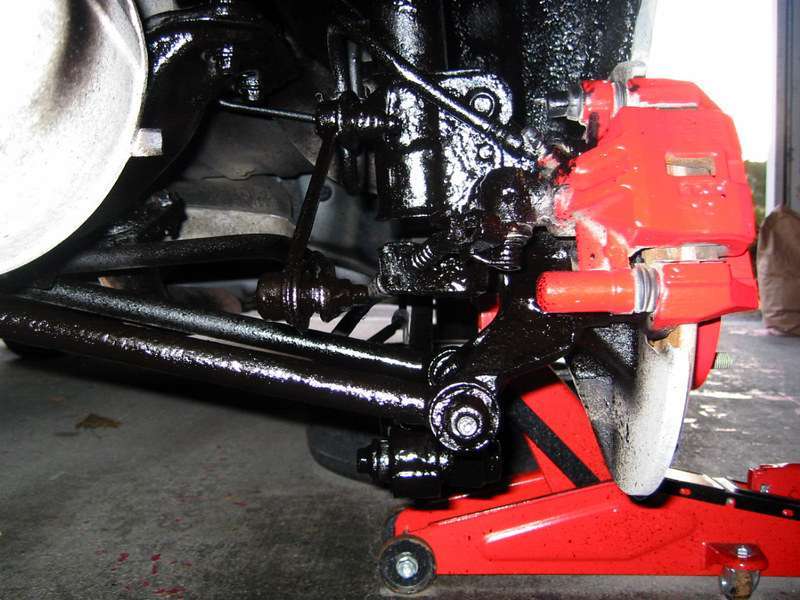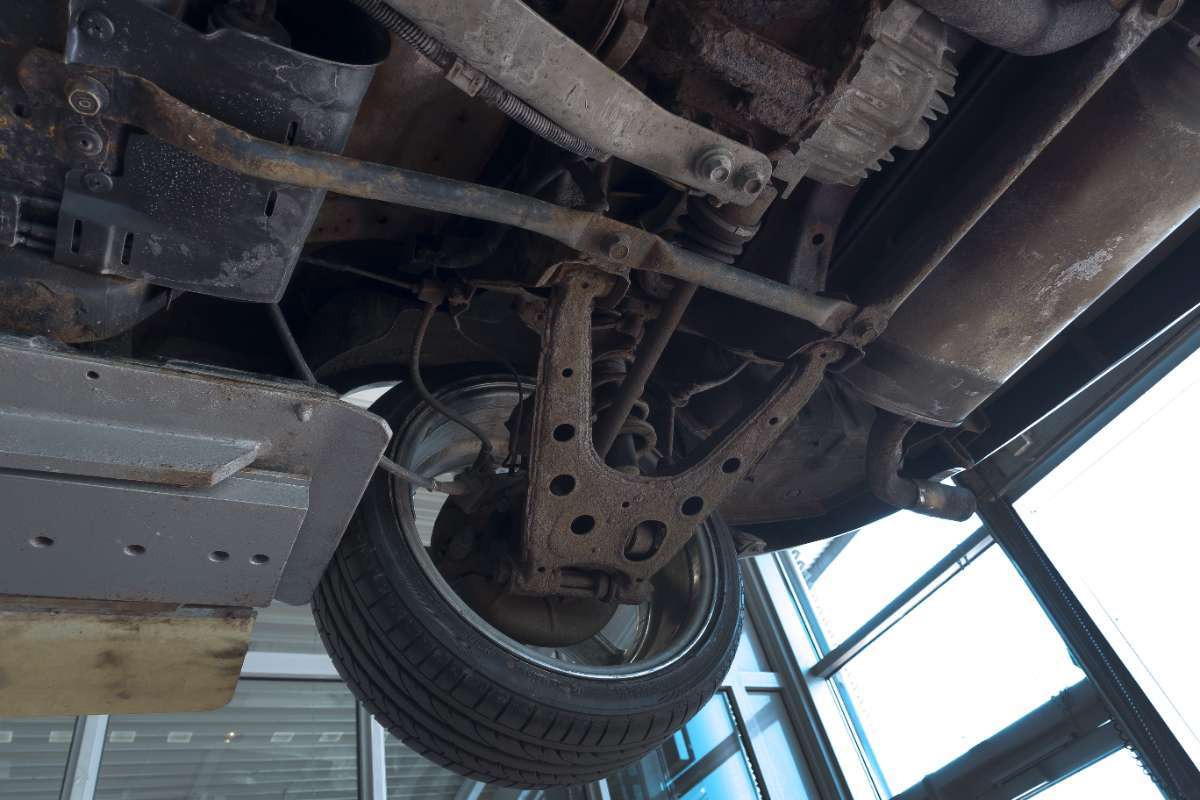Independent front suspension is a commonly used suspension design in modern vehicles. In addition to this system there are also independent rear suspensions.
Independent suspensions have revolutionized the way vehicles handle uneven road surfaces to provide comfort to passengers.
This innovative system replaces the traditional solid axle design, offering numerous benefits for a smoother and more controlled ride.
With independent front suspension, each wheel is allowed to move individually. Hence, providing improved suspension travel and reducing bump-steer.
The use of different types of suspension springs allows for better control over the vehicle’s roll stiffness and ride quality. For example, transverse leaf springs or coil springs.
Independent front suspension assemblies incorporate pivot points that enhance steering effort and responsiveness.
Therefore, drivers who experience vehicles with independent front suspension often notice a significant improvement in overall handling and maneuverability.
The system effectively absorbs shocks from road imperfections, resulting in a more comfortable driving experience.
Benefits of the independent front suspension (IFS).
Each wheel moves independently, such that the wheel on the opposite side isn’t affected by the other wheel’s movement. Hence, allowing for improved handling and ride comfort.
The new IFS system enhances vehicle stability and control by minimizing body roll during cornering. This is possible because of effective weight distribution during cornering.
This front suspension part allows each wheel to maintain better road contact, resulting in enhanced traction.
Improved suspension articulation allows for better absorption of bumps and uneven surfaces, ensuring a smoother ride.
The IFS design provides greater flexibility in adapting to various terrains and driving conditions. For example, off-road and highway driving.
By isolating the movement of each wheel, independent front suspension reduces the impact felt on one side when encountering obstacles or potholes.
The IFS setup is commonly found in modern vehicles due to its superior performance and versatility.
Independent front suspension parts.
An independent front suspension system consists of various components that work together to provide a smoother and more controlled ride.
Understanding the different parts of an independent front suspension can help you appreciate its functionality and importance in modern vehicles.
Additionally, this knowledge will help you come up with a diagnosis whenever there is a suspension system problem by simply identifying the part that is faulty.
1). Control arms.
These crucial components connect the wheels to the chassis, allowing for movement and flexibility.
The upper control arm helps maintain proper alignment, while the lower control arm supports the weight of the vehicle.
2). Ball joints.
Integral to the suspension system, ball joints enable smooth movement between the control arms and steering knuckles.
They allow for articulation as you navigate turns and bumps, ensuring optimal handling.
3). Shock absorbers.
They’re also known as dampers. Shock absorbers reduce vibrations caused by uneven road surfaces.
Therefore, they enhance driving comfort and stability by absorbing energy from bumps and dips.
4). Sway Bar or stability bar.
A stabilizer bar, helps to reduce body roll during vehicle cornering. It’s a connection between the left and right sides of the suspension in order to counteract excessive leaning.
5). Hub assemblies.
The hub assembly includes the spindle and bearings which connect the wheel to the suspension system component parts. It houses the wheel bearings and provides a mounting point for the brake assembly.
6). Suspension springs.
Coil springs or other types of suspension springs usually offer support to the vehicle’s weight. They also absorb shocks from the up and down movement of driving over uneven road surfaces.
Their position is between the control arms and the vehicle’s body or frame.
7). Bushings and bearings.
There are various bushings and bearings that are used throughout the front suspension system. Their function is to reduce friction and allow smooth movement of components.
Furthermore, they are essential for maintaining proper alignment and ensuring durability of the suspension.
Understanding how all these parts work together is essential for maintaining a well-functioning independent front suspension system.
From controlling unsprang weight to optimizing tire contact with the road surface, each component plays a vital role in delivering a comfortable and responsive driving experience.
Independent front suspension advantages.

Independent front suspension is a system that utilizes springs, shocks, and linkages to enhance the performance of a vehicle’s front wheels.
It offers several benefits that greatly improve the overall driving experience. It is a popular suspension type used mostly in four wheel drive vehicles.
1). Absorbs bumps and vibrations.
One of the key advantages of independent front suspension is its ability to absorb bumps and vibrations from the road surface.
By allowing each wheel to move independently, it ensures a smoother ride for both the driver and passengers.
2). Enhances steering response.
Independent front suspension also plays a crucial role in improving steering response. The individual movement of each wheel allows for better maneuverability and agility.
Such that one wheel can move faster than the other to cover the difference in distance during cornering. Hence, making it easier for drivers to navigate corners or sudden turns with precision.
3). Improves ride quality.
Another significant advantage is the improvement in overall ride quality. With independent front suspension, the vehicle’s weight is distributed more evenly across all four wheels, reducing body roll and providing better stability on various terrains.
4). Superior handling and cornering capabilities.
Independent front suspension allows each wheel to move independently. Hence, providing better control and responsiveness when turning corners.
This results in improved handling, allowing drivers to navigate curves with ease.
5). Enhanced braking performance.
By keeping the tires in constant contact with the road surface, independent front suspension improves braking efficiency.
The individual movement of each wheel helps distribute braking forces evenly, reducing the risk of skidding or loss of control during sudden stops.
6). Smoother ride over uneven terrain.
Independent front suspension absorbs bumps and unevenness in the road more effectively than other types of suspensions.
This results in a smoother and more comfortable ride for passengers, even when traveling on rough or bumpy surfaces.
Independent front suspension systems types.
Independent front suspension systems are crucial components in modern vehicles. They provide a smooth and comfortable ride while ensuring optimal handling and stability.
There are several types of independent front suspension systems available, each offering unique characteristics suited to different vehicle applications.
1). MacPherson strut.
The MacPherson strut is a widely used suspension system due to its simplicity and cost-effectiveness. Its design is commonly found in front-wheel-drive vehicles where space constraints are prevalent.
This is a single wishbone suspension system that consists of a single control arm, coil spring, and shock absorber assembly.
It provides satisfactory ride comfort and stability, however, it may not offer the same level of precision as other systems.
Simple design that provides a cost-effective solution for suspension systems. Its simple design reflects on the manufacturing and installation costs.
2). Double wishbone.
The double wishbone suspension system is often employed on sportier cars that demand precise control.
This system utilizes two control arms connected to the wheel hub assembly. By allowing independent movement of each wheel, it enhances wheel articulation and improves overall handling.
This suspension design reduces body roll during cornering maneuvers.
3). Multi-link suspension.
The multi-link suspension system combines the advantages of other systems to achieve optimal performance.
It utilizes multiple links and control arms to connect the wheel hub assembly to the chassis. This configuration allows for independent suspension movement.
This feature makes it possible to maintain tire contact with the road surface. As a result, the multi-link system enhances stability, handling, and ride quality.
Limitations of independent front suspension for high-speed applications.

Independent front suspension, is widely used and highly effective in many applications. However, it has certain limitations that need to be addressed when considering its use in high-speed scenarios.
1). Excessive body roll during aggressive maneuvers.
At high speeds, the independent front suspension can sometimes lead to increased body roll. This tends to have an effect on the stability and control of the vehicle.
It can be particularly problematic during aggressive maneuvers such as sharp turns or sudden lane changes.
2). Additional reinforcement for handling high loads.
When subjected to heavy loads, the independent front suspension systems may require additional reinforcement to ensure optimal performance.
This reinforcement could involve strengthening some of its components. For example, control arms, bushings, or even upgrading the overall design of the suspension system.
3). Compromised ground clearance.
Some designs of independent front suspension may compromise the vehicle ground clearance when used in high-speed applications.
This can limit the vehicle’s ability to navigate uneven terrain or obstacles. It increases the risk of damage to vital components.
Solutions for the limitations of independent front suspension.
The following help to overcome the limitations of the IFS. Furthermore, they help to optimize the independent front suspension (IFS) for high-speed applications.
Manufacturers and engineers have implemented various solutions the following solutions:
1). Stabilizer bars.
Adding stabilizer bars helps reduce body roll by connecting both sides of the suspension system together.
This improves stability during aggressive maneuvers at higher speeds. It does so by evenly distributing the vehicle’s weight through out the suspension set-up.
2). Adjustable ride height.
Incorporating an adjustable ride height feature allows drivers to lower their vehicles’ center of gravity for enhanced stability at high speeds.
This adjustment helps minimize body roll and improve overall handling performance. Enthusiasts make use of lift kits to adjust the vehicles height.
3). Wider track width.
Increasing the track width between left and right wheels helps to enhance stability during high-speed cornering.
A wider track width usually provides a broader base reduces the likelihood of excessive body roll and improves traction levels.
Independent front suspension in 4×4 vehicles.
Independent wheel movement is one of the main features in 4×4 vehicles. The Four wheel drive vehicle is usually built with enhanced traction in mind for off-road drives.
Understanding the basics of independent front suspension (IFS) is crucial for anyone interested in off-roading or improving their vehicle’s performance.
The various independent front suspension system parts play a vital role in how it functions and the advantages it offers.
By allowing each wheel to move independently, IFS provides better control, stability, and handling on uneven terrain.
To fully appreciate the benefits of independent front suspension, it’s important to explore its different types and how they work. From double wishbone to MacPherson strut setups, each system has its strengths and limitations.
While IFS excels in most applications, high-speed scenarios may require addressing certain limitations for optimal performance.
It’s essential to weigh the pros and cons carefully if you’re considering upgrading your vehicle’s suspension or looking for a new 4×4 with independent front suspension.
Remember that seeking expert advice from automotive professionals is always recommended before making any modifications or purchases.

